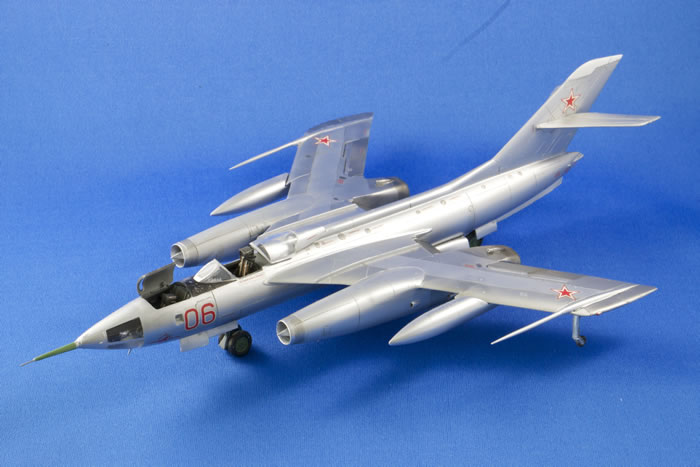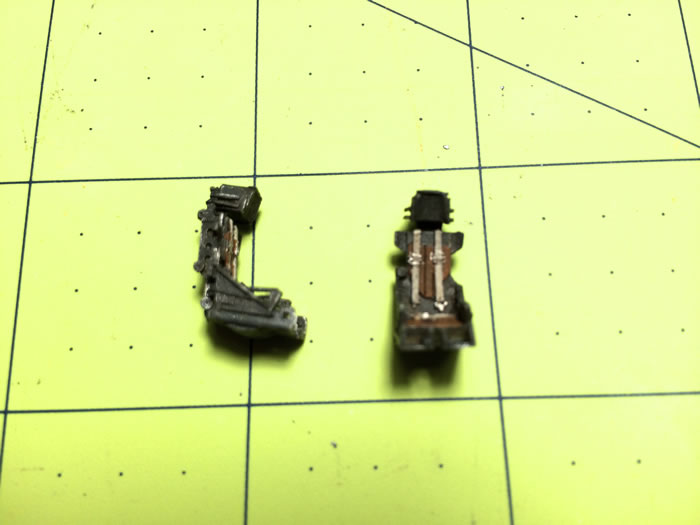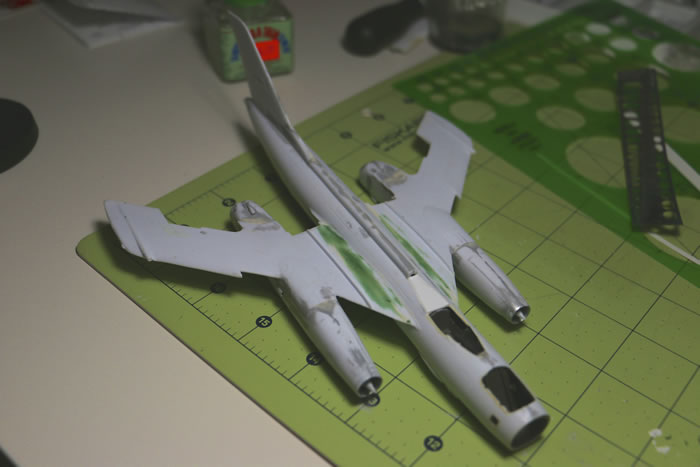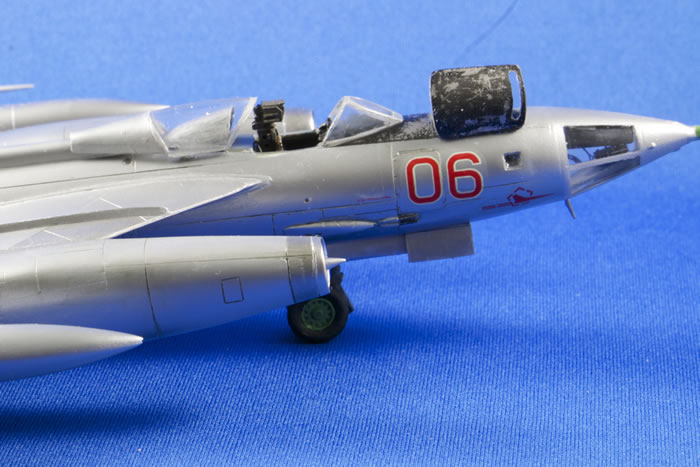Amodel's 1/72 scale
Yakovlev Yak-28
by Bradley Bronov
|

|
Yakovlev Yak-28 |

Eduard's La-7 ProfiPack is available online from Squadron.com
The Yakovlev Yak-28 was a swept wing, turbojet-powered combat aircraft used by the Soviet Union. Produced initially as a bomber, it was also manufactured in reconnaissance, electronic warfare, interceptor, and trainer versions, known by the NATO reporting names Brewer, Firebar, and Maestro respectively. Based on the Yak-129 prototype first flown on 5 March 1958, it began to enter service in 1960.
It was first[1] seen by the West at the Tushino air show in 1961. Western analysts initially believed it to be a fighter rather than an attack aircraft — and a continuation of the Yak-25M, at that — and it was designated "Flashlight". After its actual role was realized, the Yak-28 bomber series was redesignated "Brewer".
The Yak-28 had a large mid-mounted wing, swept at 45 degrees. The tailplane set halfway up the vertical fin (with cut-outs to allow rudder movement). Slats were fitted on the leading edges and slotted flaps were mounted on the trailing edges of the wings. The two Tumansky R-11 turbojet engines, initially with 57 kN (12,795 lbf) thrust each, were mounted in pods, similar to the previous Yak-25. The wing-mounted engines and bicycle-type main landing gear (supplemented by outrigger wheels in fairings near the wingtips) were widely spaced, allowing most of the fuselage to be used for fuel and equipment. It was primarily subsonic, although Mach 1 could be exceeded at high altitude.
Total production of all Yak-28s was 1,180.
It was in a Yak-28 that Captain Boris Kapustin and Lieutenant Yuri Yanov made their heroic feat on 6 April 1966, when one of the engines on their aircraft stopped, they managed to divert their aircraft from a housing estate in West Berlin into Lake Stößensee. Both heroes were posthumously awarded with the medal of the Red Banner. Their bodies, along with the wreckage, were raised from the lake by British troops, while British agents covertly retrieved important top secret material from the plane.
The Yak-28P was withdrawn in the early 1980s, but trainer and other versions soldiered on until after the fall of the Soviet Union, flying until at least 1992. The recce and ECM aircraft were eventually replaced by variants of the Sukhoi Su-24.
(borrowed from Wikipedia)
Definitely taken from the ‘What Was I Thinking?” files, this project was my first completed Amodel kit. Please note the word completed…I’ve hade a long suffering An-22 on the bench for a very long time and have doubts as to whether or not I’ll ever finish that monster, mostly out of space considerations.
At any rate, this little gem is mostly out of box, but I did add a pair of Neomega KK-1 seats (if memory serves) and dressed up the navigator/ bomb aimer’s compartment with sheet stryrene and wire.

The detail is spurious at best, as there are precious few photos of the interior of this airplane. Additionally, I separated the one-piece canopy to show off what little of the cockpit is visible. This process was complicated somewhat by the fact that the sliding rear portion of the canopy is attached an aerodynamic fairing that was thoughtfully molded as part of the fuselage. This required a bit of surgery and reconstructive work to create the rear deck of the cockpit. No provisions were provided the instrument panel or side consoles, so out came assorted PE enhancements and some 1/72 generic instrument decals. Overall, I probably spent more time than I should have on the office considering the tiny size of it.
The fit, as is typical of Amodle kits of this vintage, was atrocious. Nothing, and I mean NOTHING fit. The parts were to be excavated from a substrate of surrounding flash, and then cleaned up and trued enough to glue together. I actually consider this to be a sort of hybrid injection molded / vacuform, considering the amount of cutting and sanding required to discover ‘the part within’ the item removed from the sprue.

In addition to the issue with the flash, the tooling (my guess) was probably cut in aluminum, rather than something more durable…there are an assortment of surface defects such as gouges and dents that suggest the molds have seen some rough treatment in their lifetime. That aside, this is the only game in town for this mark of Yak-28, so one perseveres…
After getting the beast assembled, many an evening were spent priming, filling, and sanding…rinse and repeat…until I was simply sick to death of looking at it. Having reached the ‘good enough’ stage, I sprayed Alclad lacquers for the NMF, and used Vallejo acrylics for the rest…a brand I’m growing to love.

The wear on the anti-glare panel was achieved using Vallejo’s chipping medium, and I’m pretty happy with the result. The only other paints used were Akan colors for interior grey and that weird green the Russians are so fond of painting their wheels.
So, there it is…proof that an Amodel kit can be built. She won’t win any contests, but looks good enough from 3 feet away. I probably could have spent a bit more time prepping for the NMF, but aside from that I’m pretty pleased with the final result, and have a very overlooked addition to my collection of midcentury Soviet aircraft.
Text and Images Copyright ©
2014 by Bradley Bronov
Page Created 23 October, 2014
Last Updated
23 October, 2014
Back to
HyperScale Main Page

|
Home
| What's New |
Features |
Gallery |
Reviews |
Reference |
Forum |
Search